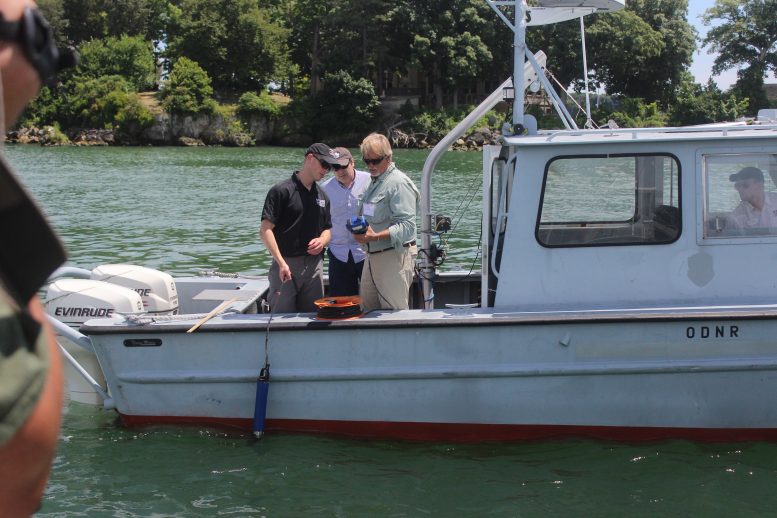From BGSU OFFICE OF MARKETING & COMMUNICATIONS
The National Oceanic Atmospheric Administration (NOAA) announced recipients of the National Centers for Coastal Ocean Science (NCCOS) Competitive Research Program Harmful Algal Bloom Awards Tuesday.
Bowling Green State University is part of a team receiving fiscal year 2019 funding for “Monitoring and Event Response for Harmful Algal Blooms: Portable Toxin Detection Technology to Support Great Lakes Decision Support Tools.”
LimnoTech Inc., MBio Diagnostics Inc., NOAA NCCOS, The Ohio State University, University of Michigan Cooperative Institute for Great Lakes Research and the University of Toledo are also part of the award team.
The project, which improves the rapid detection of cyanotoxins in the field to provide managers with timely information on risk and minimize exposure to stakeholders, began in September and will continue through August 2022. Fiscal year 2019 funding through the award is $408,000. Total anticipated funding is $877,000.
“This award allows for collaboration between universities and industry partners, and enables universities to work with their regional stakeholders,” said Dr. Tim Davis, BGSU Patrick L. and Debra (Scheetz) Ryan Endowed Professor. “As a public university for the public good, we think these partnerships are absolutely critical to conduct the best science possible.”
The project team is piloting use of a commercially available, rapid, portable system capable of quantitative detection of two cyanobacterial toxins, cylindrospermopsins and microcystins. This system, the MBio HAB Toxin System, will be integrated into existing monitoring programs that engage recreational beach managers, water treatment plant operators, charter boat captains and state environmental scientists.
“I am very excited to see the MBio HAB Toxin System be used by Lake Erie water managers and citizen scientists to significantly expand our ability to track and report the toxin concentrations throughout the bloom in near real-time,” Davis said. “These data will help improve toxin concentration forecasting models, which will ultimately lead to a better ability to protect human health.”
Throughout the project, the team will concurrently evaluate and validate the system against the current “gold standard” analytical method and determine the system’s accuracy and sensitivity for detecting common microcystin varieties. End users will communicate results to the project team and selected resource managers in real-time using a cell phone application. The rapid-detection technology and improved monitoring strategies piloted in this project will prevent human exposure to contaminated drinking and recreational waters in western Lake Erie and in other similarly affected water bodies around the United States.





